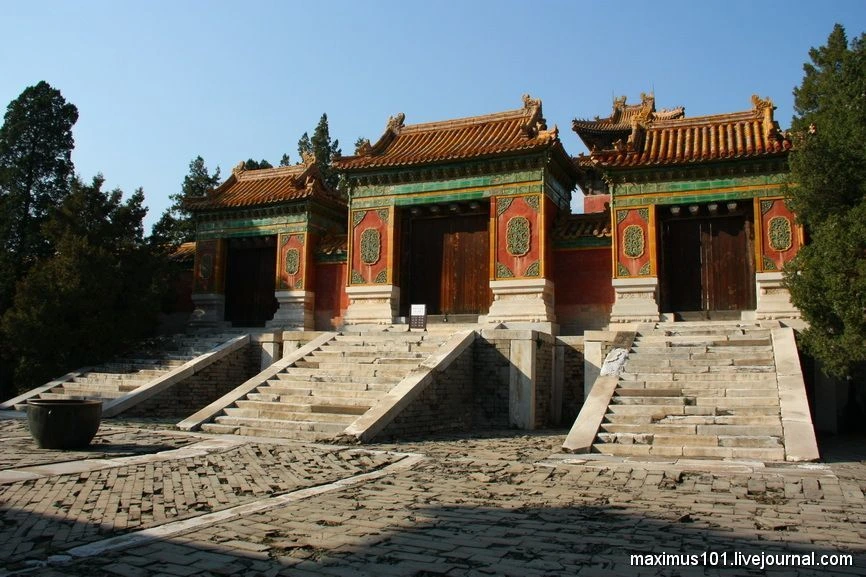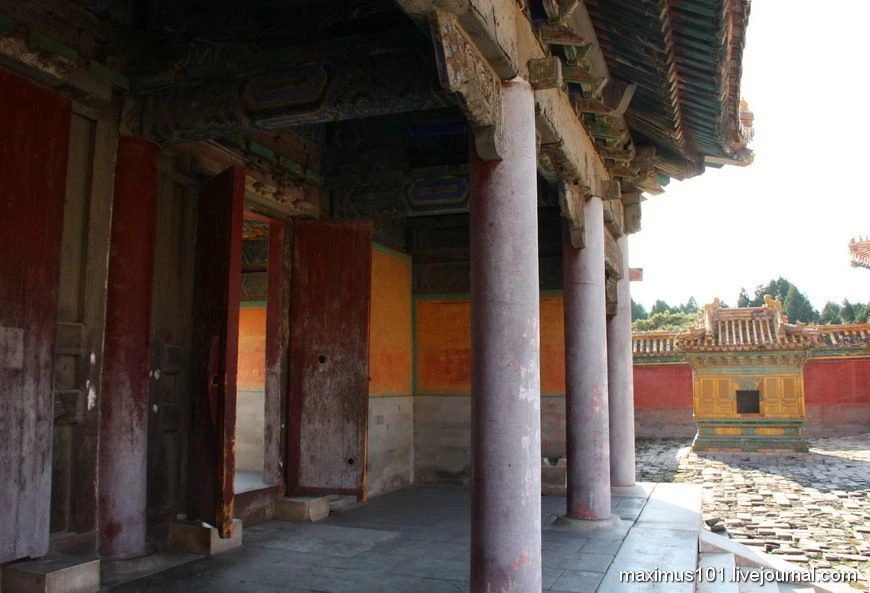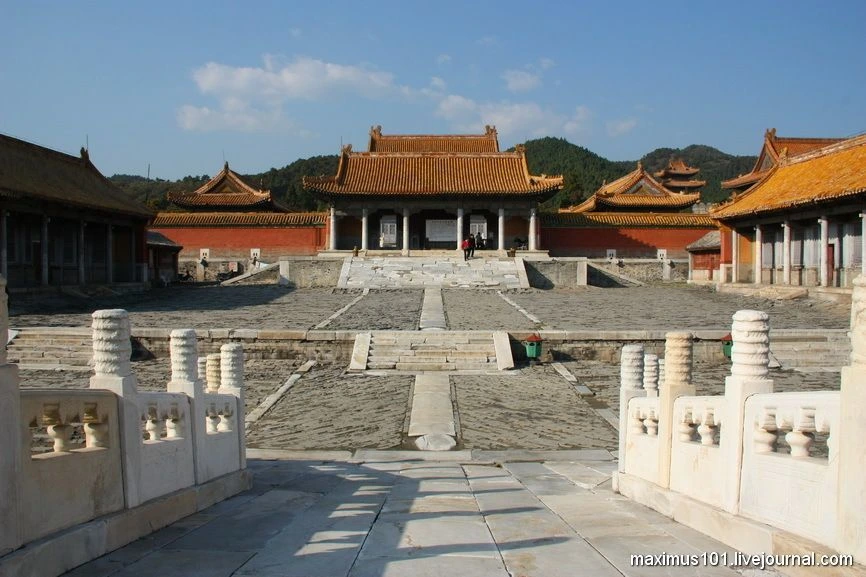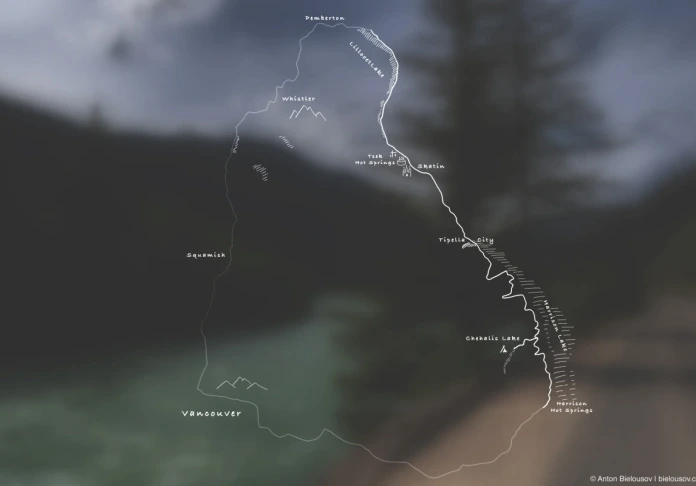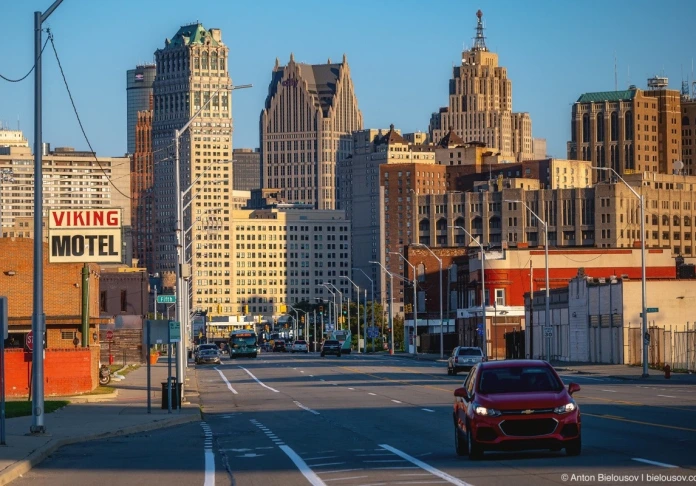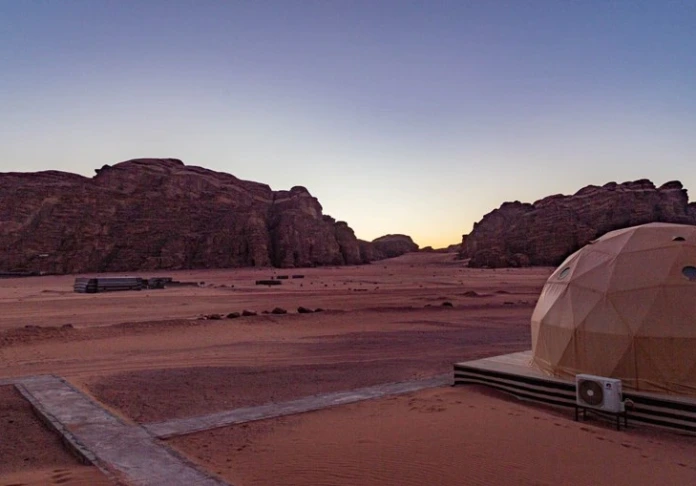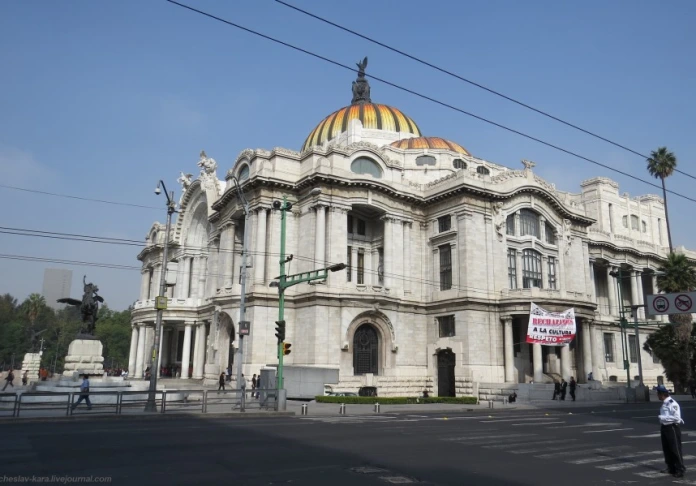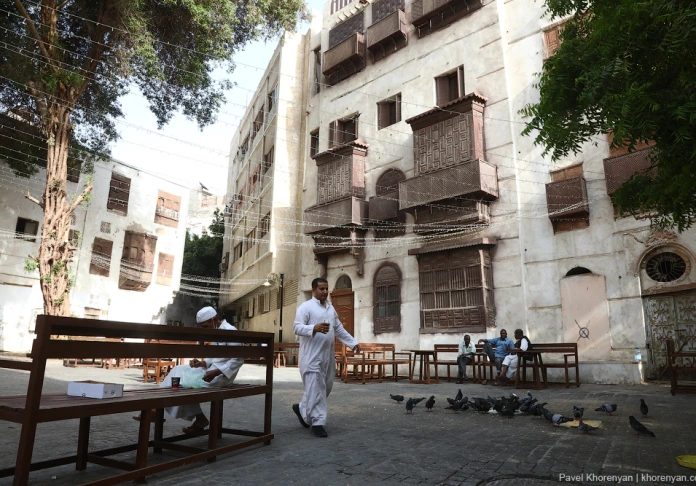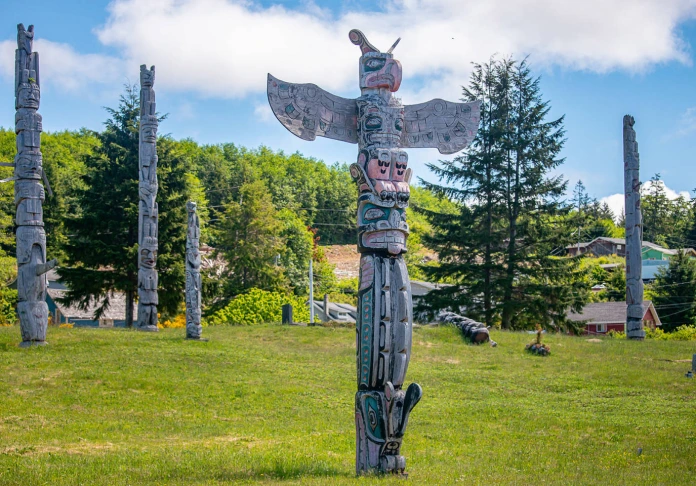Tsindunlin - the grandeur of the last empire of China.
Eastern Qing Dynasty tombs or Tsindunlin located 125 km north-east of Beijing. Tsindunlin necropolis is one of the largest cemeteries in imperial China. Here are buried five Qing emperors, empresses 15 and 136 concubines. The complex has an area of 80 square meters. km. Almost all the tombs are well preserved, although three burials were plundered during the civil war in China in 1928. This has made them accessible to tourists, so now Tsindunlin most informative historical necropolis, where you can explore the imperial mausoleums, not only outside but also inside. The only penetrated by the well-known imperial tomb is Tsindunlina in China - the mausoleum of Ming Emperor Wanli, located in the necropolis Shisanlin, near Beijing.
The road spirits in Tsindunlin.
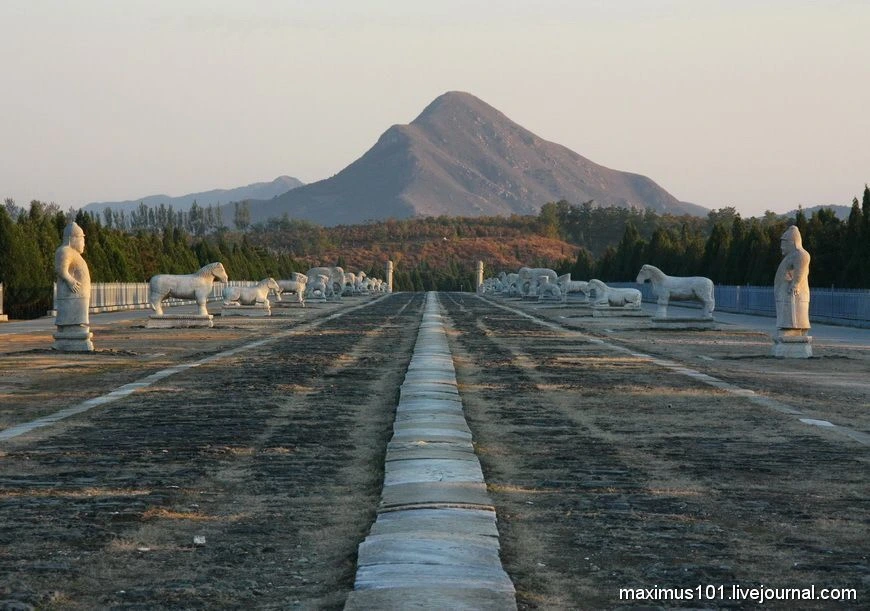
The total length of roads spirits about 5 km. You should not even dream to get around on foot Tsindunlin, here it is necessary to take the car to the driver.
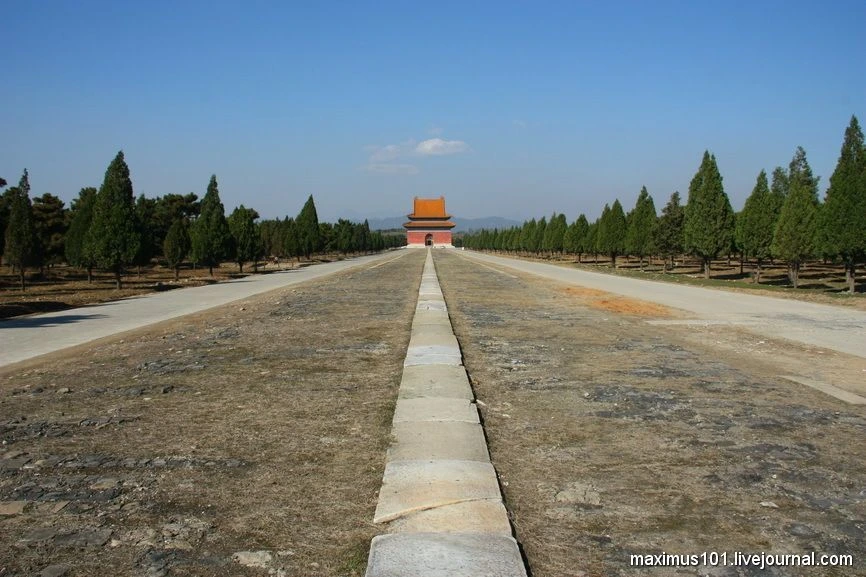
If you do not take a taxi from Beijing, the Eastern Qing Tombs to the bus goes to the bus station near the metro station Davanlu. Need to go to the town of Zunhua (Zunhua), and from there by shuttle bus to the tombs themselves. But most likely, you will meet the local Taxi Driver Mafia, they will stand on the side of the road, before turning on Zunhua - the bus driver to warn them. You will be the only European in the bus, so for these passengers is provided "special" service. You give them your hands - for the taxi Tsindunlinu I paid 150 yuan.
Turtle at the entrance to the necropolis.
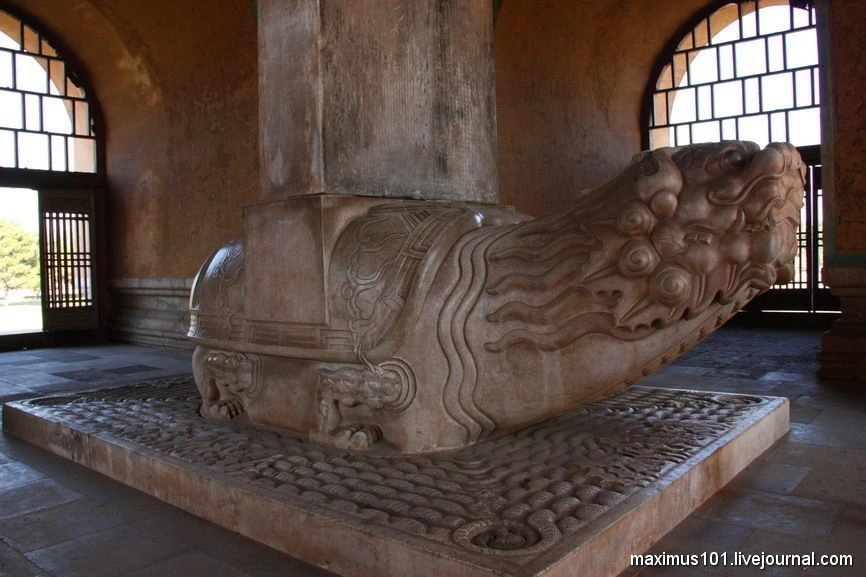
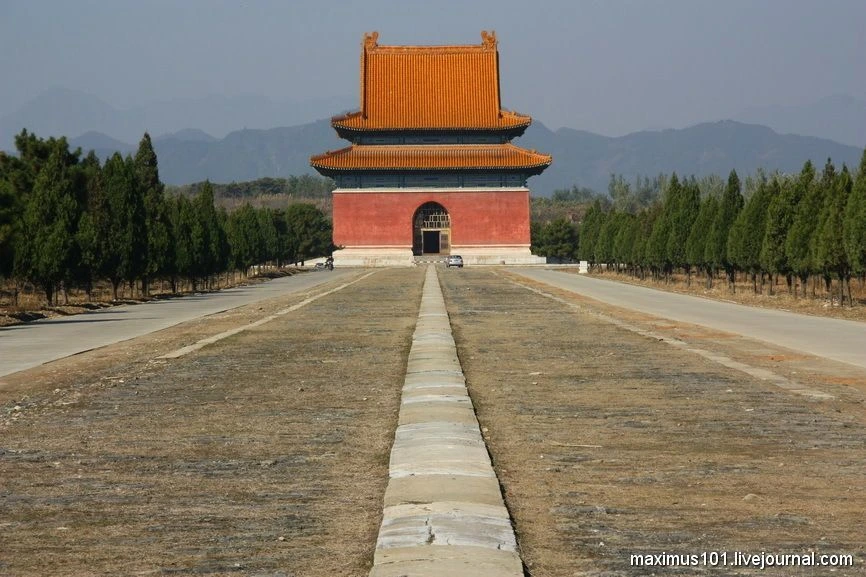
Qing imperial burial graves are identical to the old Chinese Ming Dynasty, which can be seen in Shisanlin closer to Beijing. Unlike Tsindunlina that the local tombs slightly smaller, and there are in addition to the main "avenue spirits" more personal way with sculptures, leading to almost every tomb.
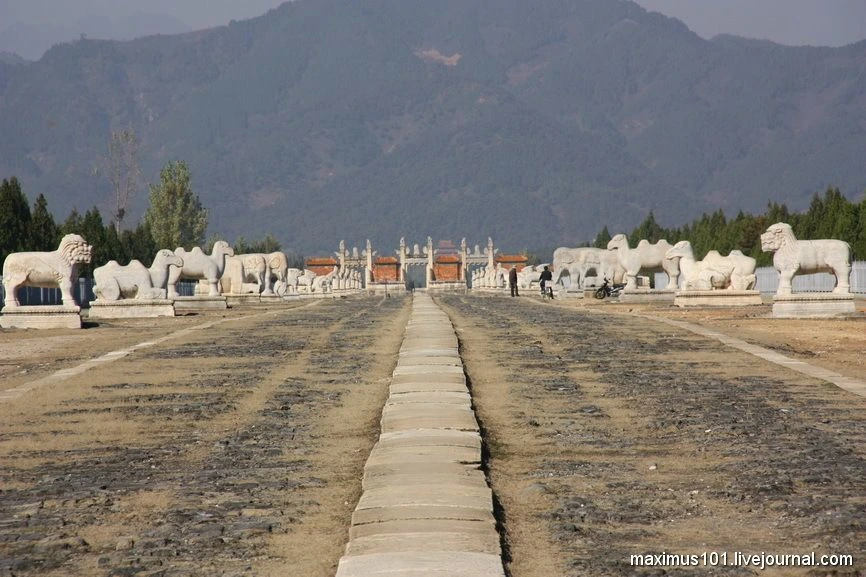
The first "road spirits" - Shen Lu appeared in China in the I century BC Perhaps this element burials came to China from the West.
Initially, the funeral along the way puts the figure of the winged lions - encore. Over time, the number of sculptures grew, there were new characters in the Tang Dynasty were figures of horses, somewhere in the 10th century, with the Sun, began to make figures of elephants, and in the 14th century during the time of the Ming came camels.
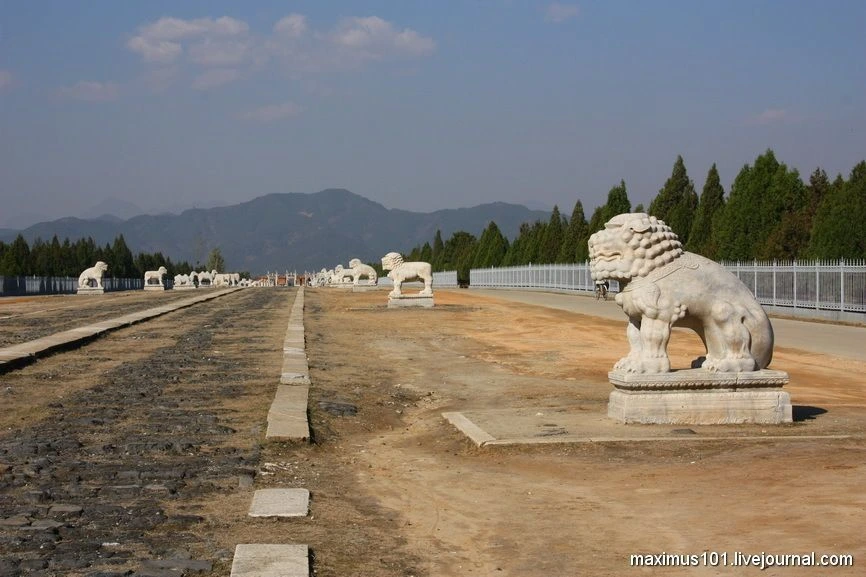
The first ruler of the Manchu, was buried in Tsindunline Emperor Shunzhi (reigned 1644 - 1661) Shunzhi raised a good old custom of human sacrifice at the burial - on the grave of his favorite concubines were killed 30 slaves. Unfortunately, the tomb Shunzhi now closed for inspection.
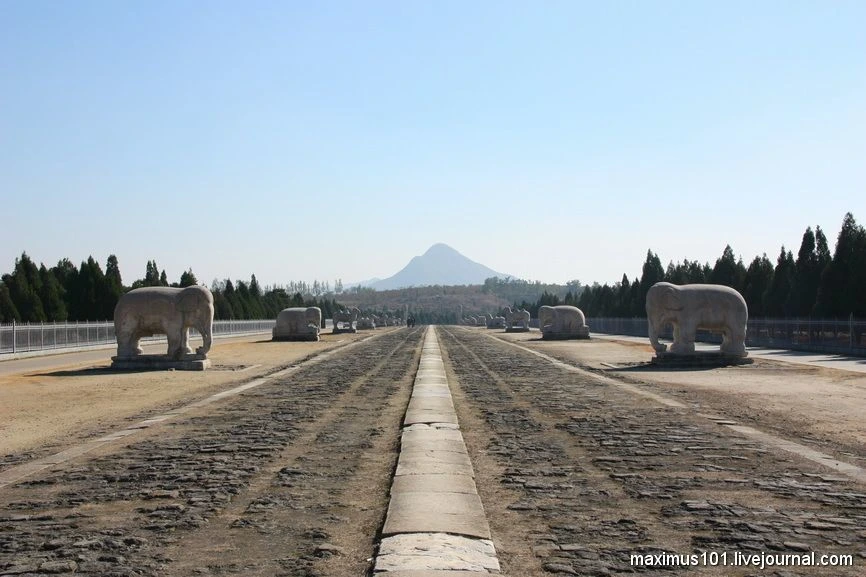
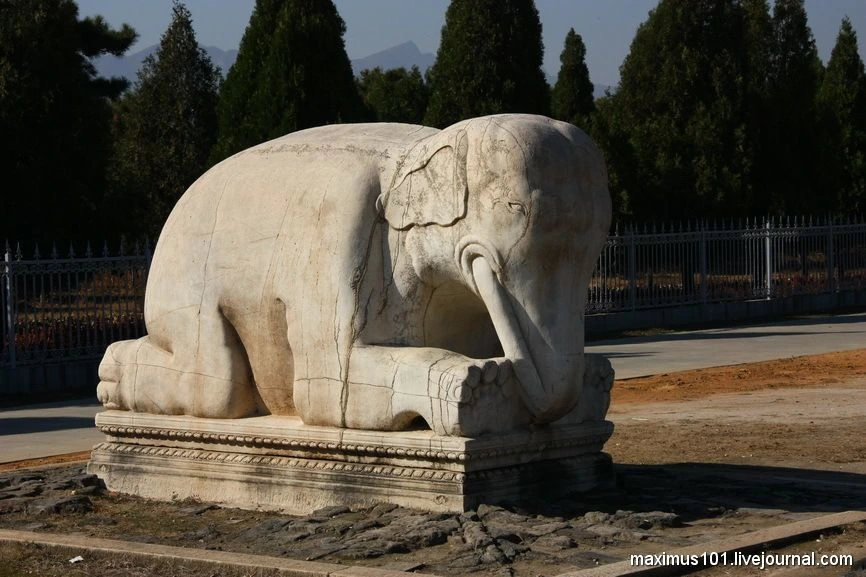
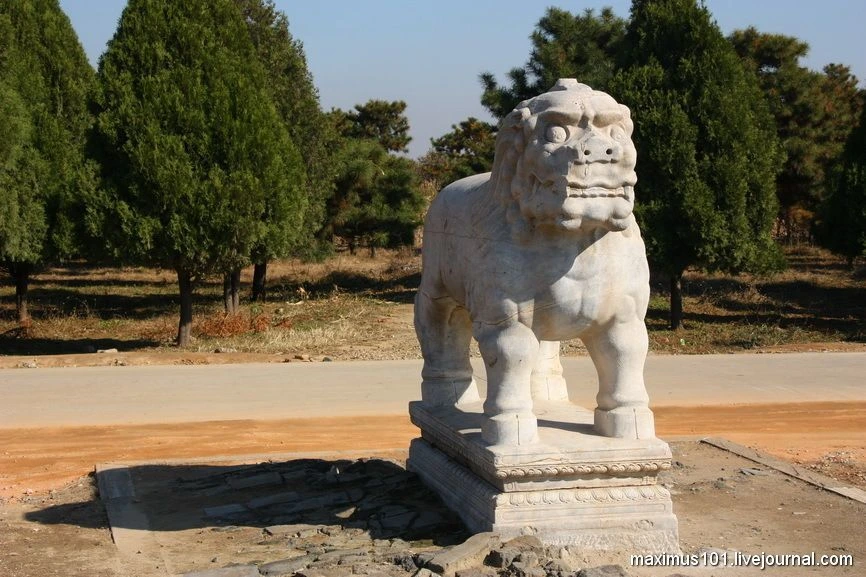
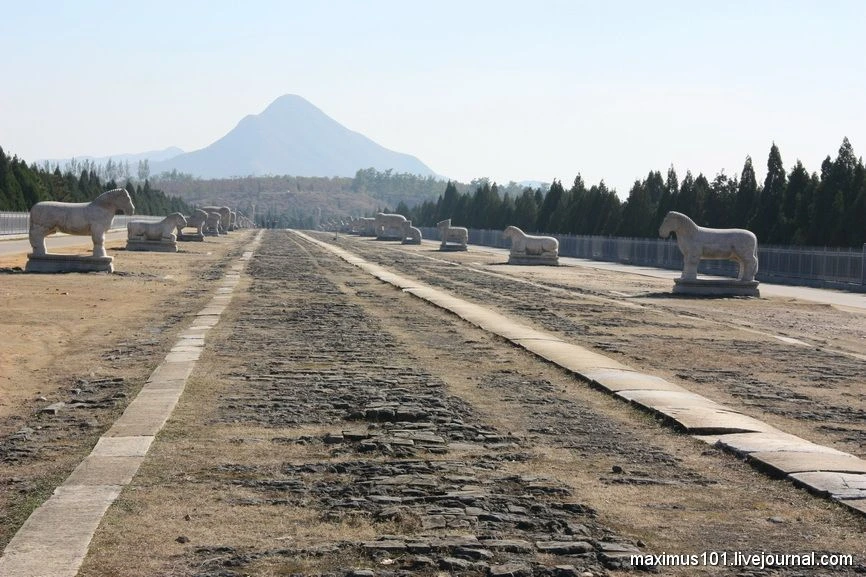
Figure eunuch.
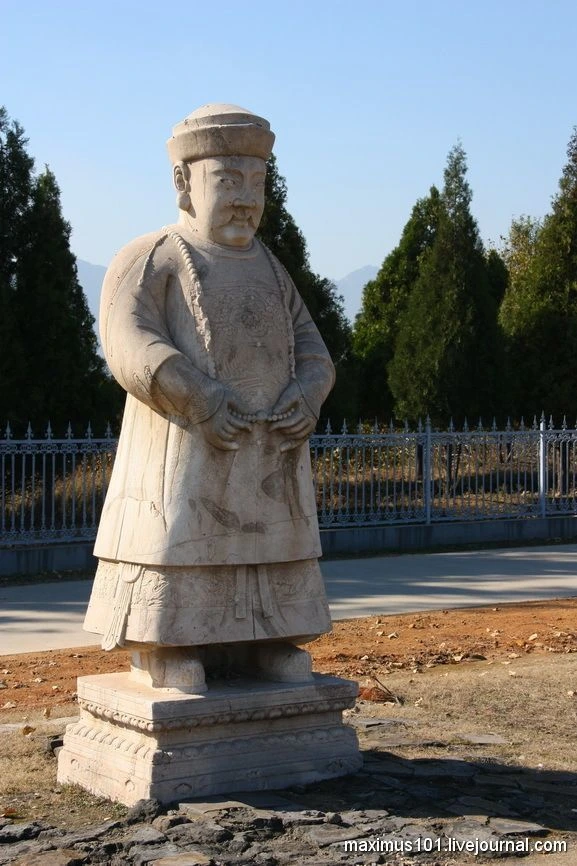
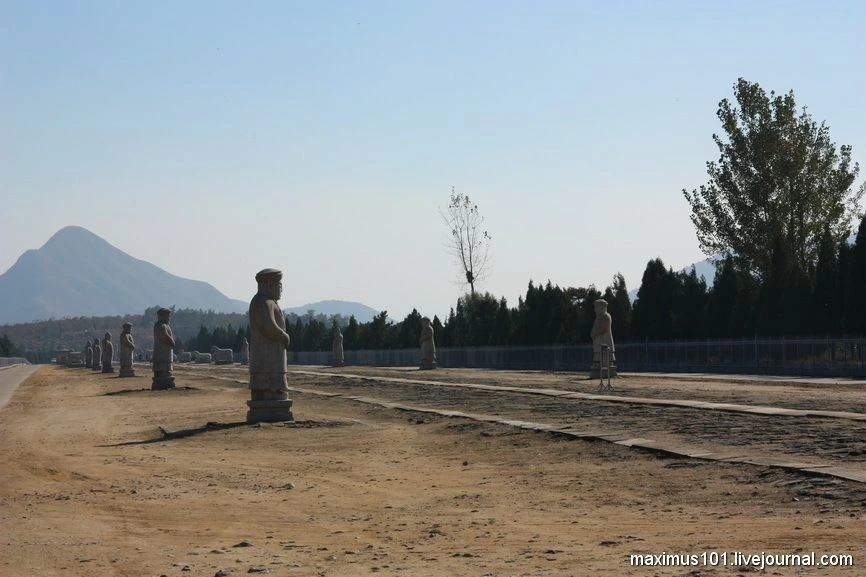
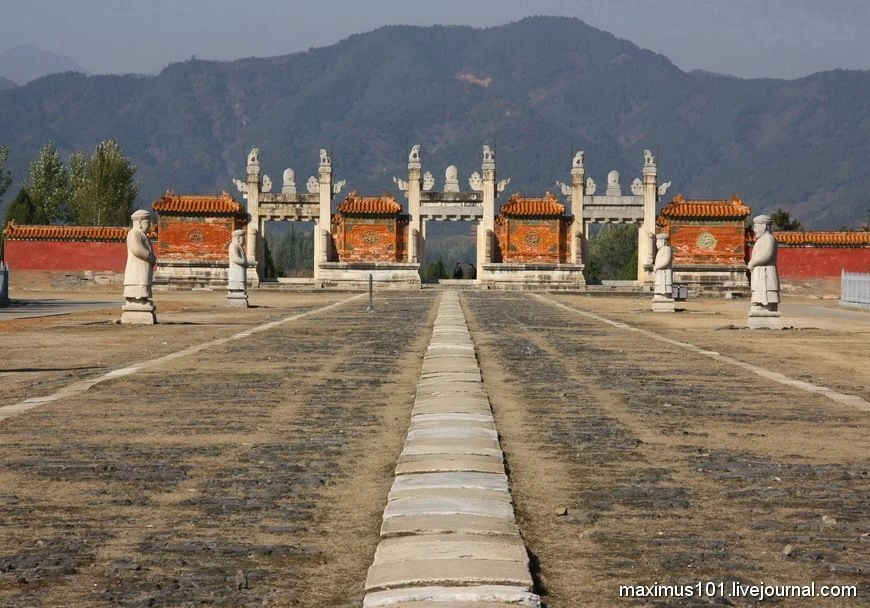
Expensive perfume - a complex engineering project, consisting not only of the sculptures, but also of the bridges, arches, pavilions.
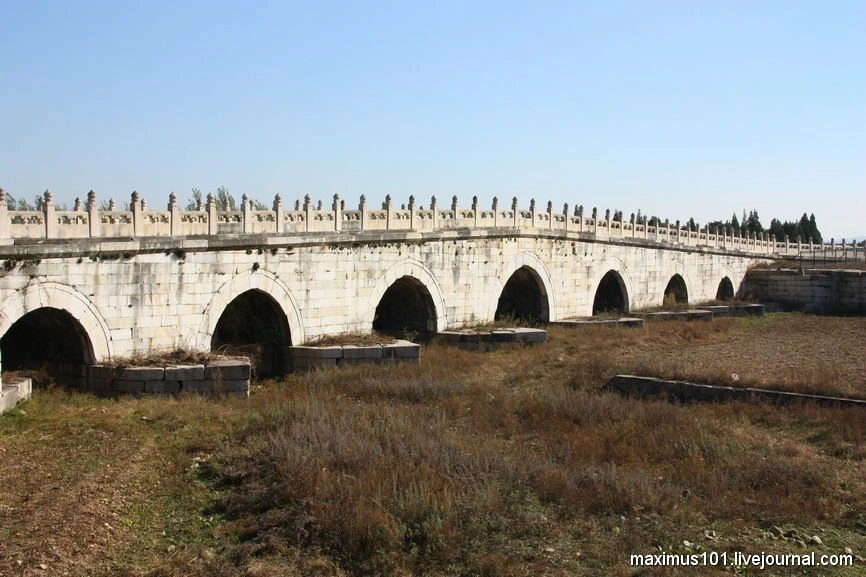
The westernmost tomb in Tsindunline - Dinlin, Emperor Xianfeng (1831-1861 biennium). He was the husband of the famous Empress Dowager Cixi.
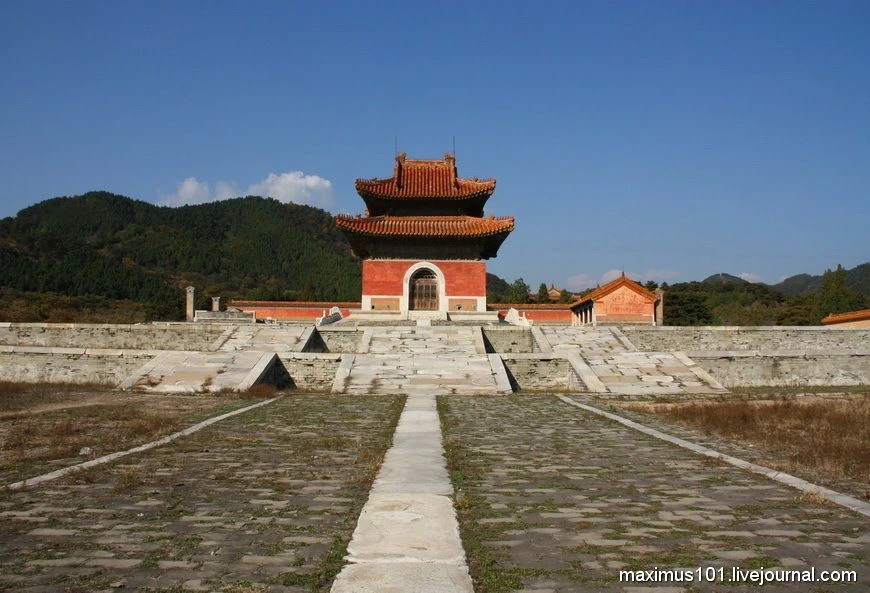
The tomb stands on a terrace and a large step has its own way of spirits. The mausoleum is not available for inspection, you can not even get into the courtyard.
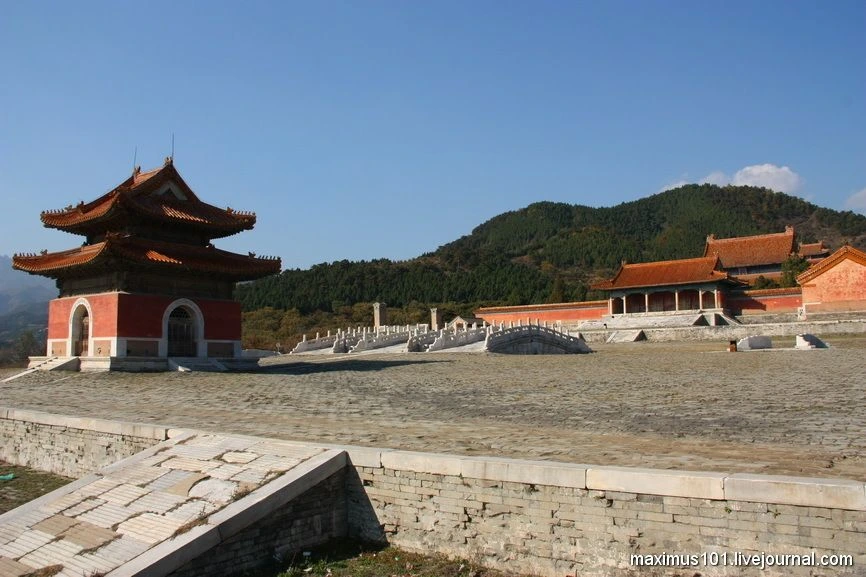
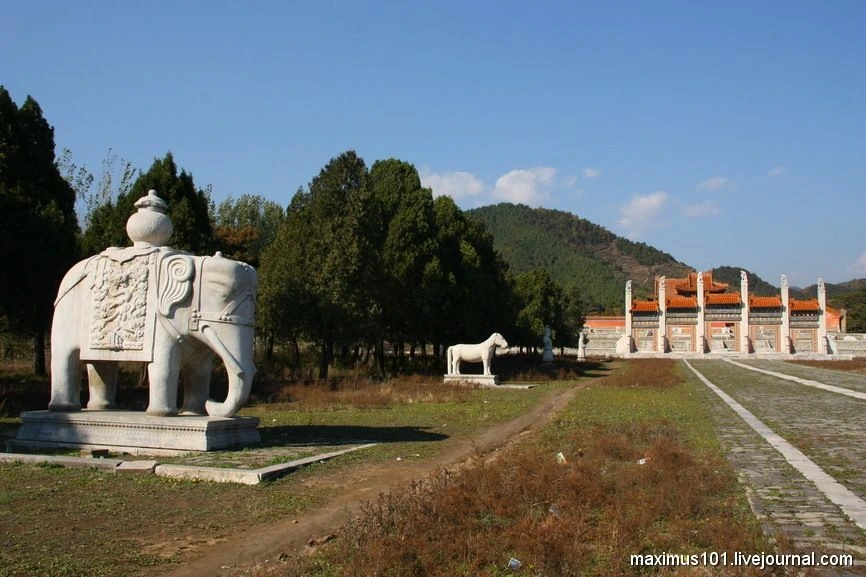
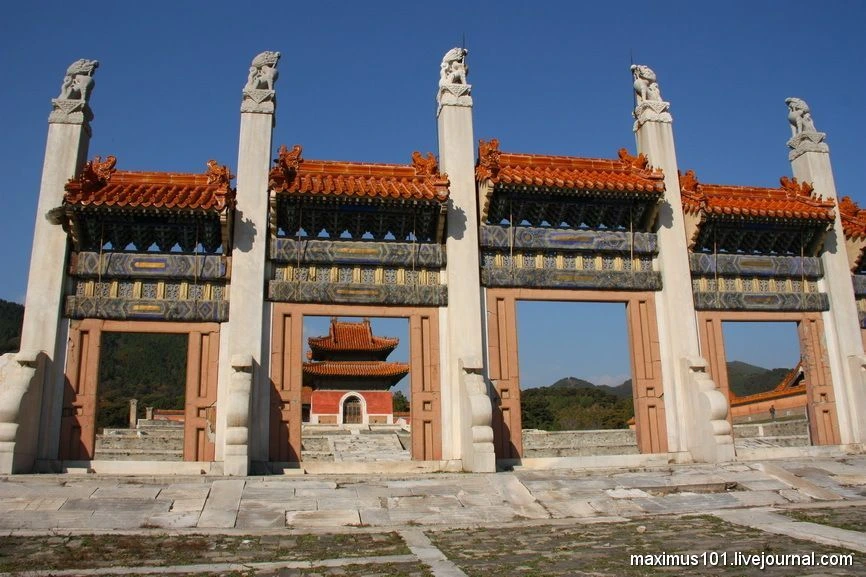
Near the tomb of Xianfeng are mausoleums of his wives - Empress Dowager Cixi Empress Dowager Ci'an and. Their mausoleums are paired with each other, between them passes only a narrow channel filled with water.
The pavilion with a turtle at the entrance to the burial of the Empress.
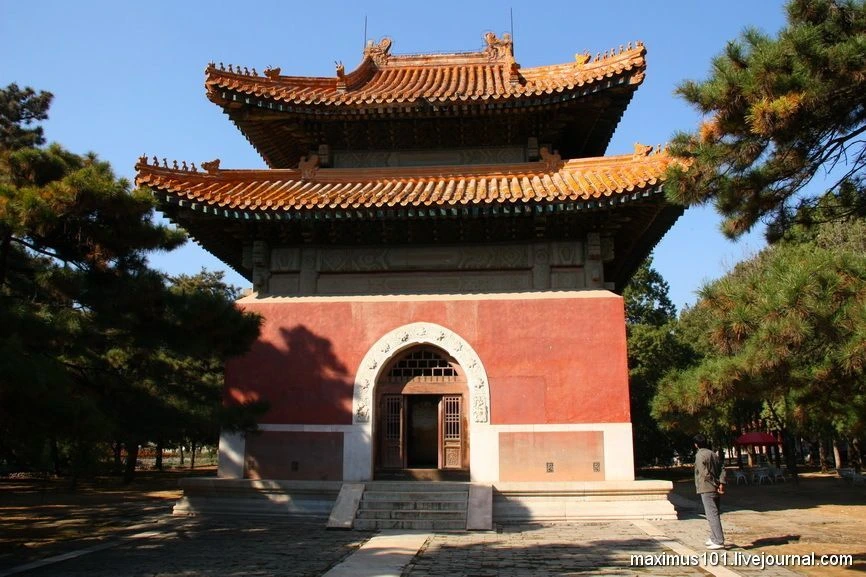
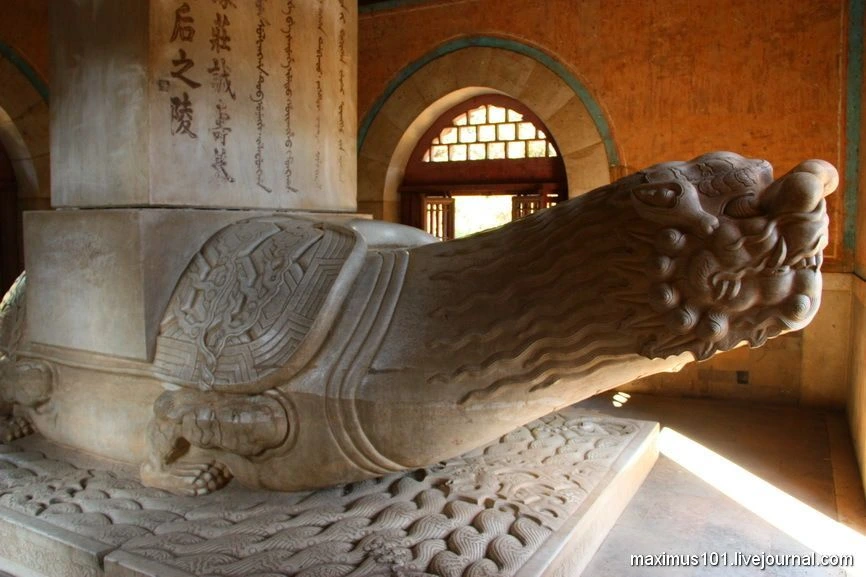
At the mausoleum Cixi deserves a special mention.
This woman has become famous more than any other Qing emperor. There are many stories related to Cixi, in a greater degree, exposing her unseemly in the world.
It is believed that Cixi spent for their entertainment and palaces of the finances of the state. I have already touched on this topic in the article about her Summer Palace Beijing. Ostensibly the palace and his tomb Cixi squandered the money allocated for the construction of the Navy of China.
When I drove up to the mausoleum of Cixi, then expect to see something similar to the Egyptian pyramids. But it turned out that the tomb of Empress - just a few elegant houses with tiled roofs.
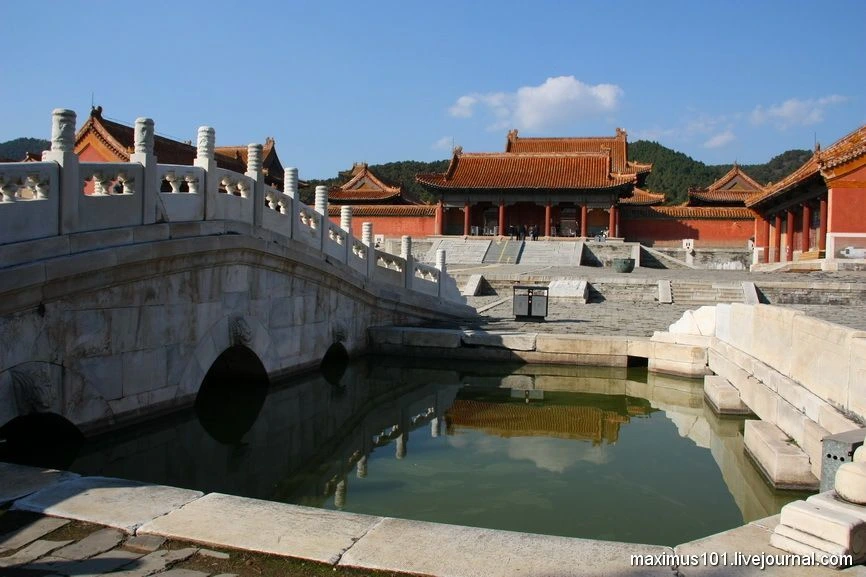
The main hall of the mausoleum burial Cixi.
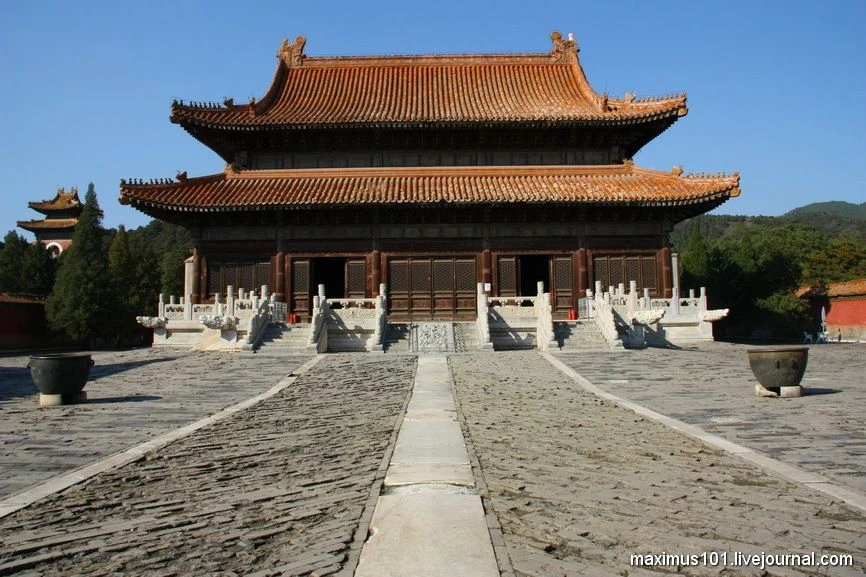
Of course, pavilions richly decorated tomb - Cixi loved luxury. Yet the all-powerful ruler of China could afford it, because it rules actually 47 years from 1861 to 1908. Absolutely no need to spend all this money gilt naval department. Since even a small cruiser will cost a lot more expensive than whole Empress mausoleum.
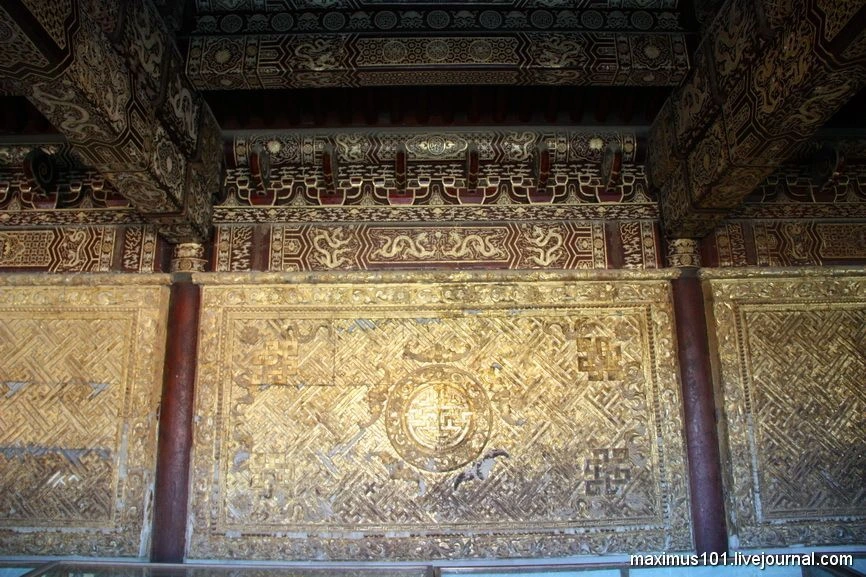
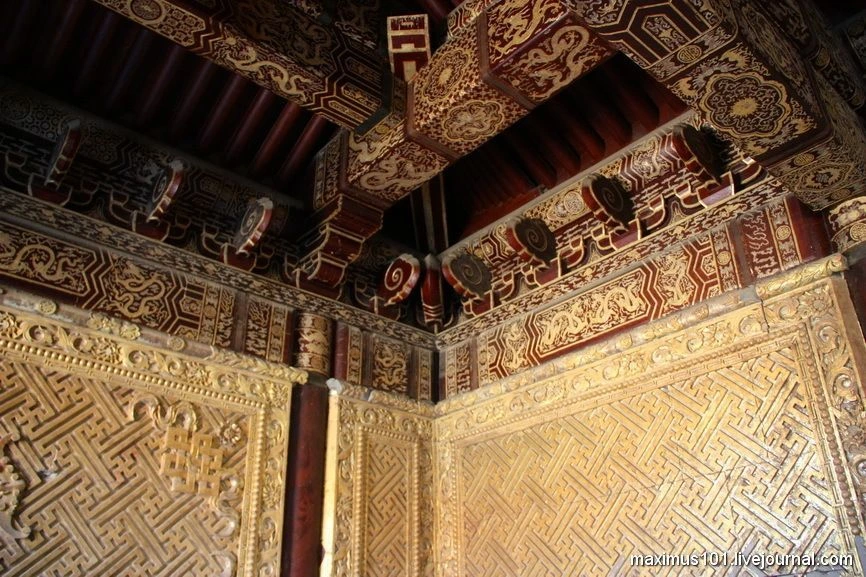
In general, the history of the tomb of Cixi once again reiterates that propaganda - a great power. Already in the late 19th century, European countries, primarily the United Kingdom, have made significant efforts to discredit the rulers of those countries where waged war. Almost the entire 19th century, "national team" Europe tried unsuccessfully to turn China into a colony, so the image of the demonization of the Chinese empress was clearly at hand "civilized" countries. Of course, Cixi was not an angel, she was a product of his age and culture of the Middle Kingdom. When she was buried, it complied with all the funeral rites millennial China. Funeral ceramic sculptures of people and animals, many of which I wrote earlier in the 19th century was replaced by paper figures, thousands of them burned at the burial of Cixi. Even in modern China was the custom to burn at the funeral paper figures of people and paper utensils, for this there are special shops where they sell paper models of cars, houses, furniture, etc.
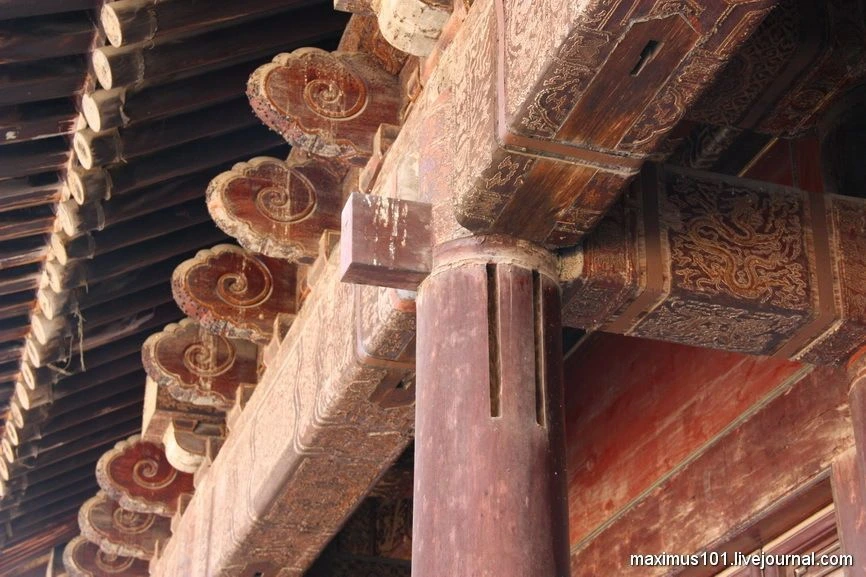
It is worth noting the high level of restoration of the funerary halls Cixi. Here, the Chinese tried to preserve the original design, and not to replace them with a remake.
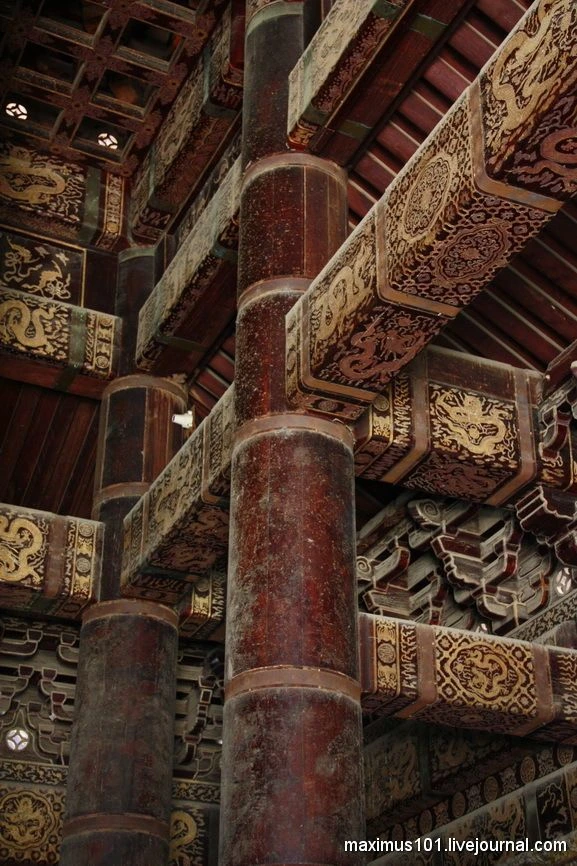
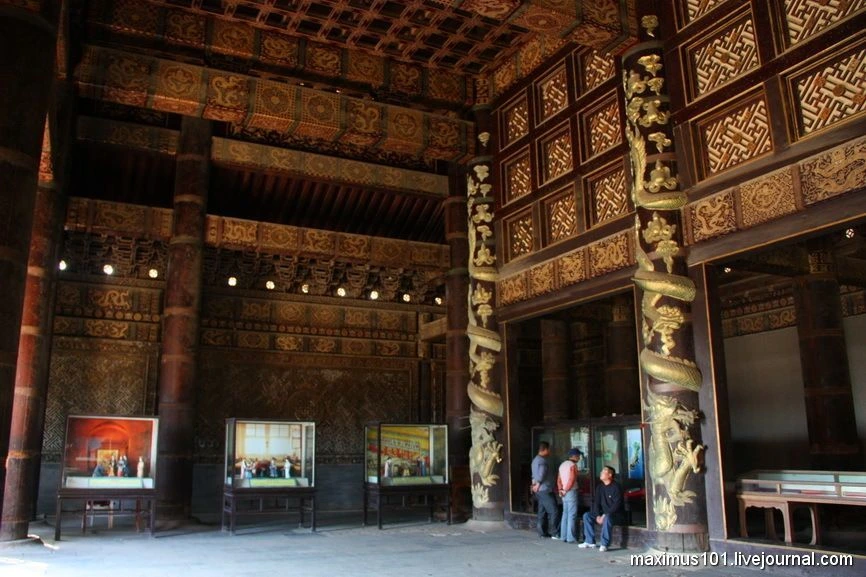
Tower mausoleum Cixi.
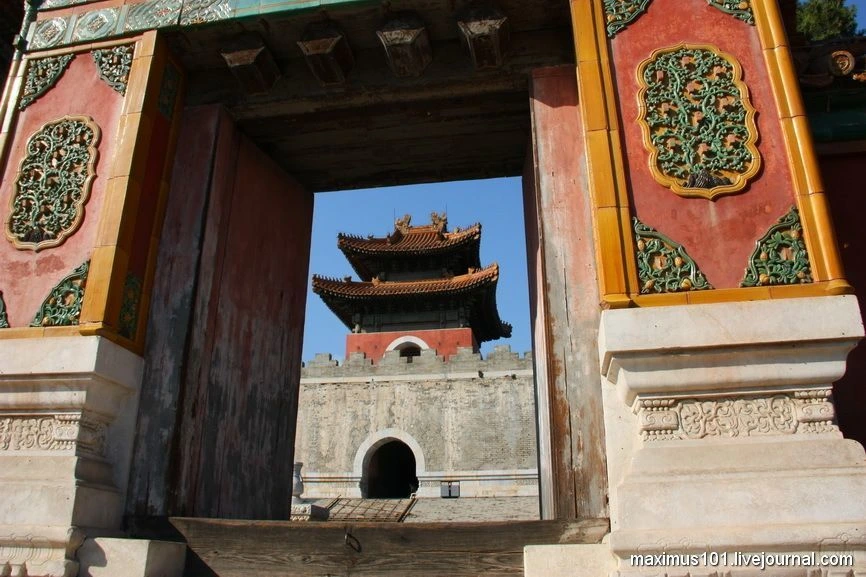
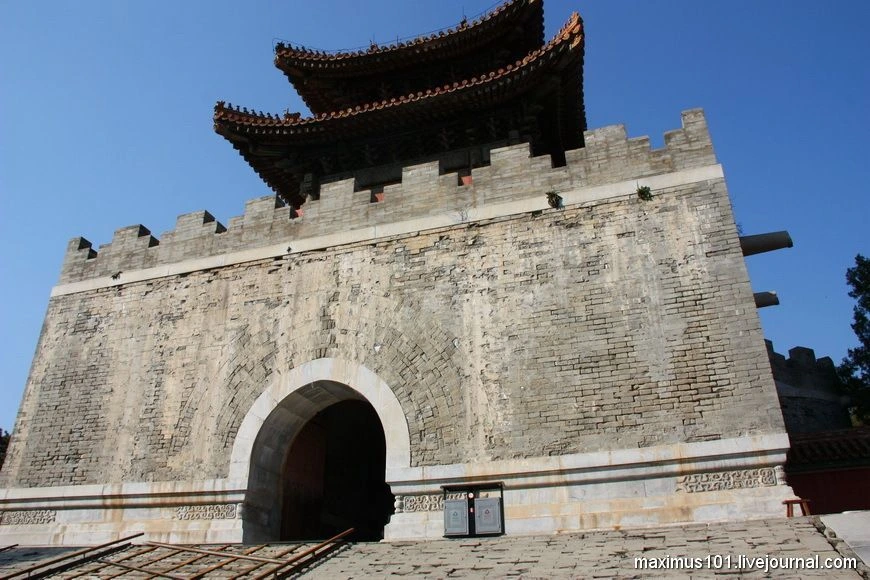
The descending corridor leading to the burial chamber only.
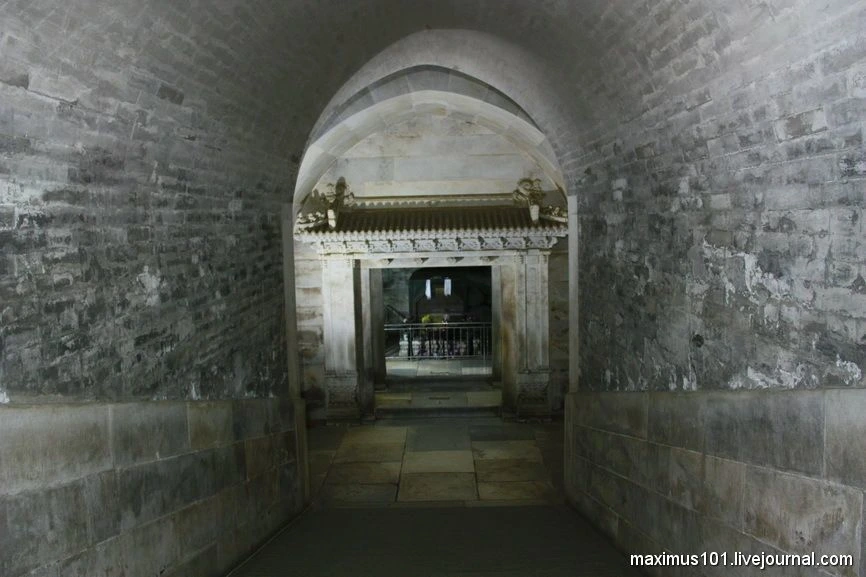
The camera is small in size but has a very high ceiling.
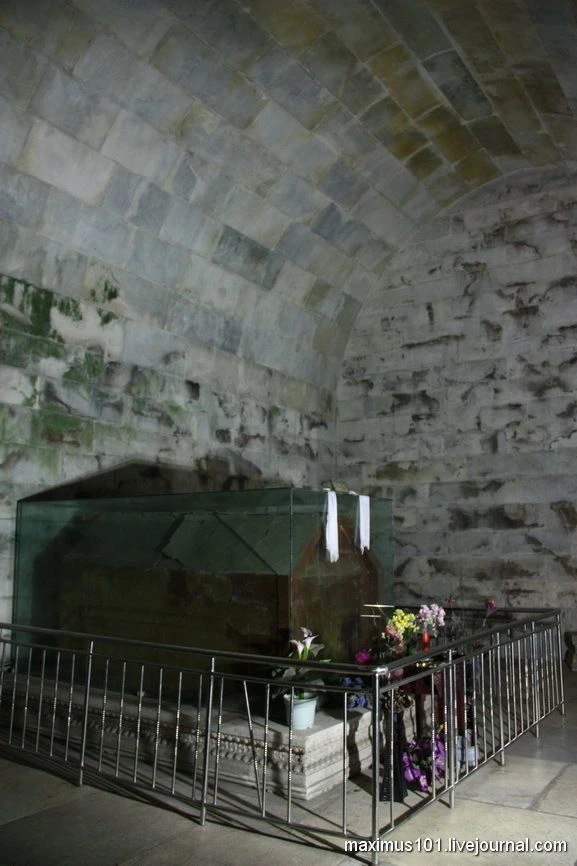
At the funeral of Cixi in 1908 in the burial chamber left thousands of items of jade, pearls and gold. But in 1928 the entire contents of the tomb was looted army of General Sun Dianying.
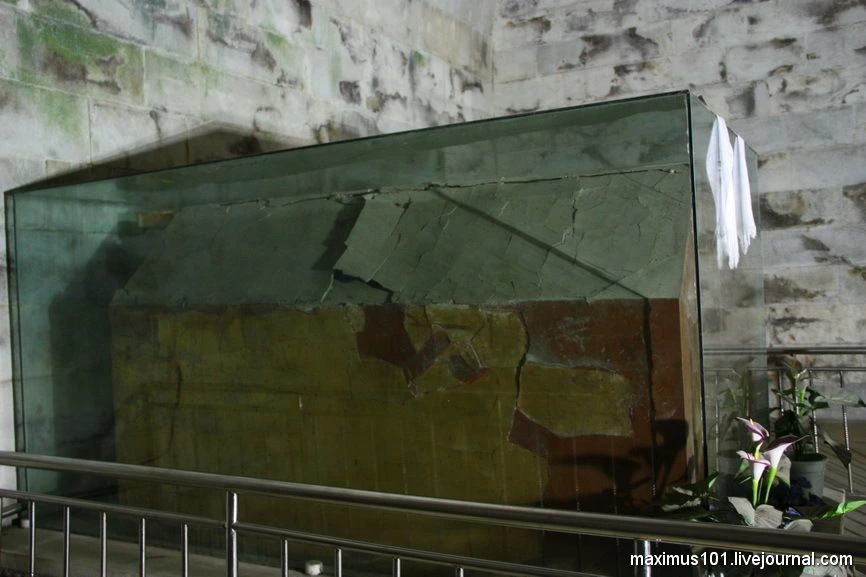
Cixi - the last Empress of China (1835-1908 gg.)
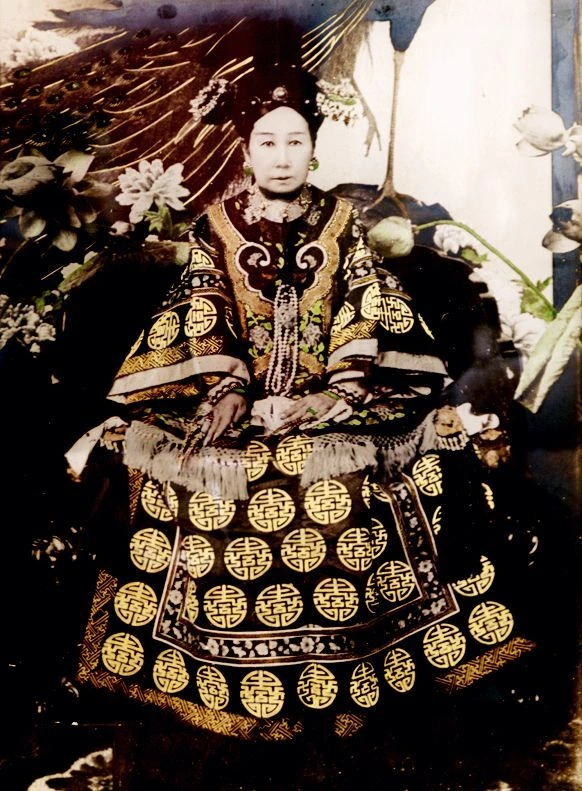
Cixi body, apparently, was once mummified. Before burying the Empress in Tsindunline body remained for a year in a temporary mausoleum in the Forbidden City. Then, when astronomers calculated the "good" date of burial, Cixi moved to her tomb in the necropolis of the Imperial.
Photo remains Cixi was done during the looting of burial in 1928.
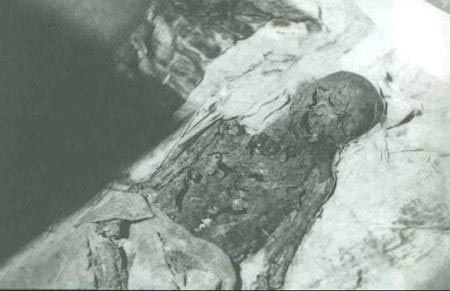
Personal belongings of the empress exhibited in one of the pavilions of the mausoleum.
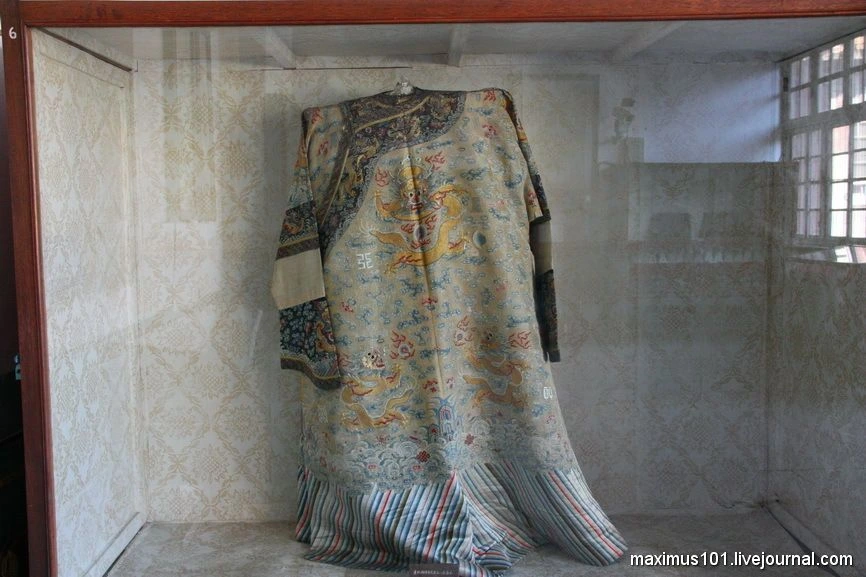
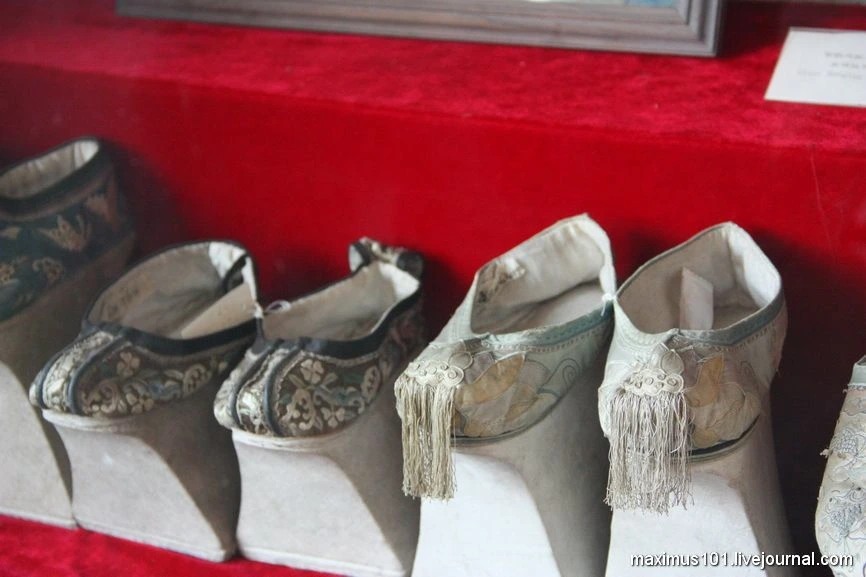
View from the tower mausoleum burial Cixi at the main hall of the neighboring mausoleum of Empress Empress Dowager Ci'an.
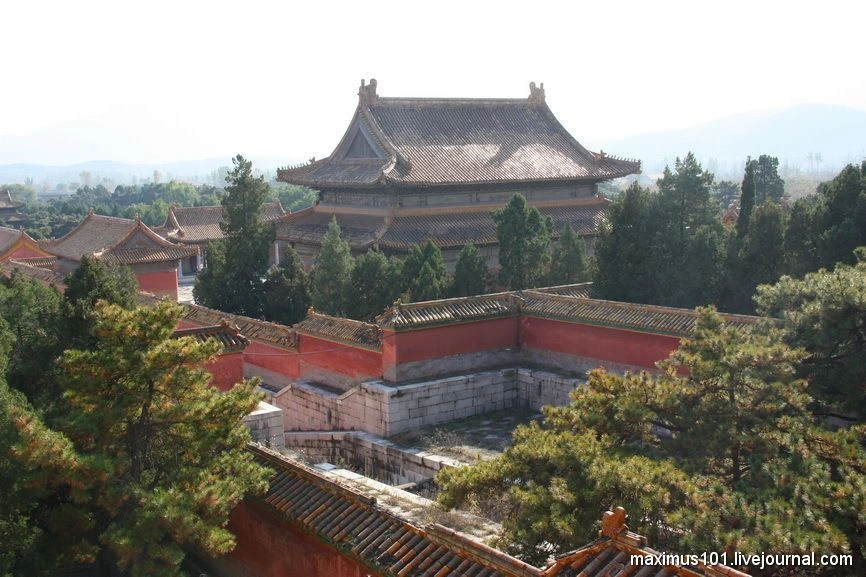
The burial mound over the burial Cixi. It involves another story about the "evil" Empress. Cixi allegedly ordered his earth mound mixed with ash and even some ingredients in order to prevent the growth of trees, she did not want to be disturbed by it - the birds that live in the crowns, animals, and other burrowing. Thus, it was concluded hardness of paranoia and Empress.
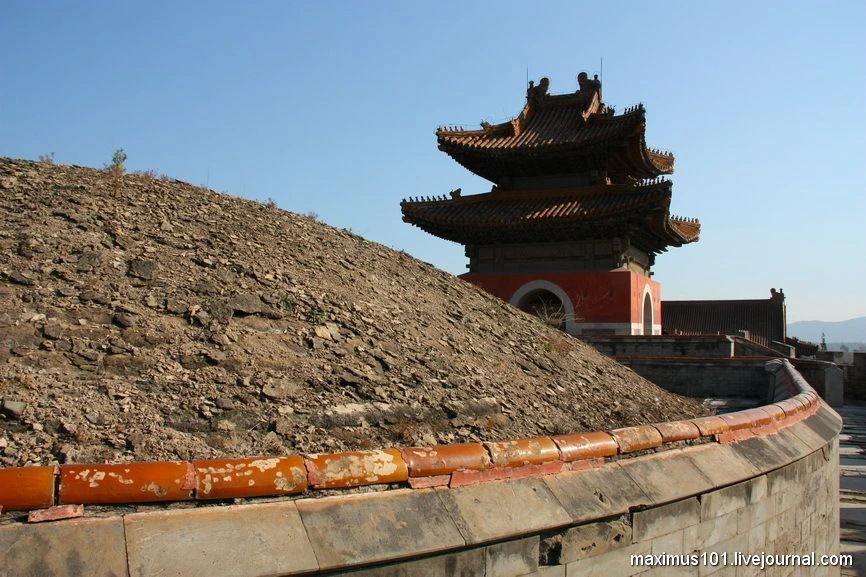
But if you look at the mausoleums of Cixi Xianfeng and his first wife - Empress Dowager Ci'an above, we can see that both the burial hill bald. From this it follows that it is not a special paranoia Empress - a custom "khimichit" to the ground on the mound was widespread at that time in China.
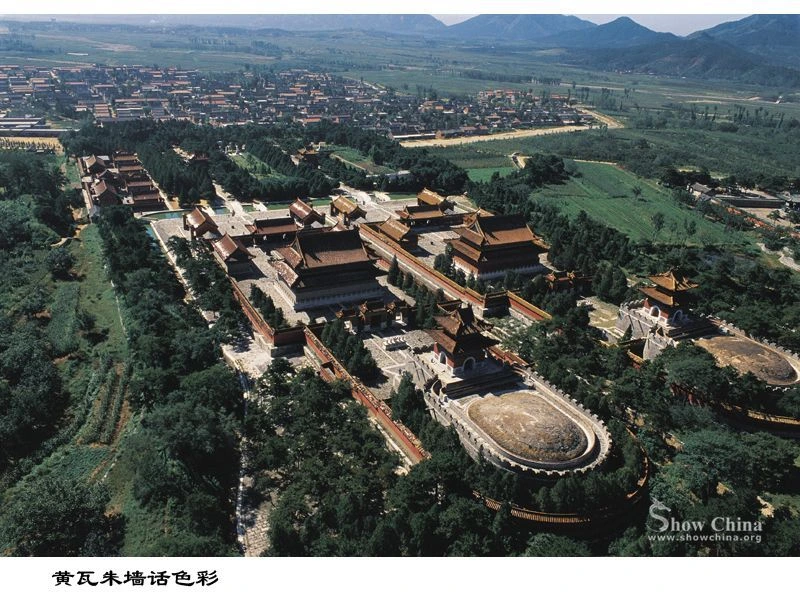
Also a top view gives a good idea of the size of the mausoleums. It is clearly seen that the tomb was terrible and horrible Cixi practically does not differ from the Empress Dowager Ci'an burial, which does not seem to spend finances throughout the empire at its disposal and generally little known ..
Interestingly, most historians believe that the Empress Dowager Cixi Empress Dowager Ci'an poisoned. But seeing both the mausoleum, I would take the story into question. The fact that the Chinese are terribly superstitious people, and Cixi here was no exception. Any Chinese fears of hostile spirits more than anything else.
Every Chinese knows that the spirits of the dead roam at night, and the spirits of the victims can avenge his killers. If Cixi Empress Dowager Ci'an really poisoned, she would never have to do a tomb near the burial of the victim, because thus it dooms itself to eternal torment. The soul of the murdered Empress Empress Dowager Ci'an revenge to her every night, the benefit of that tomb stand next :)
narrow channel of water between the mausoleums empresses.
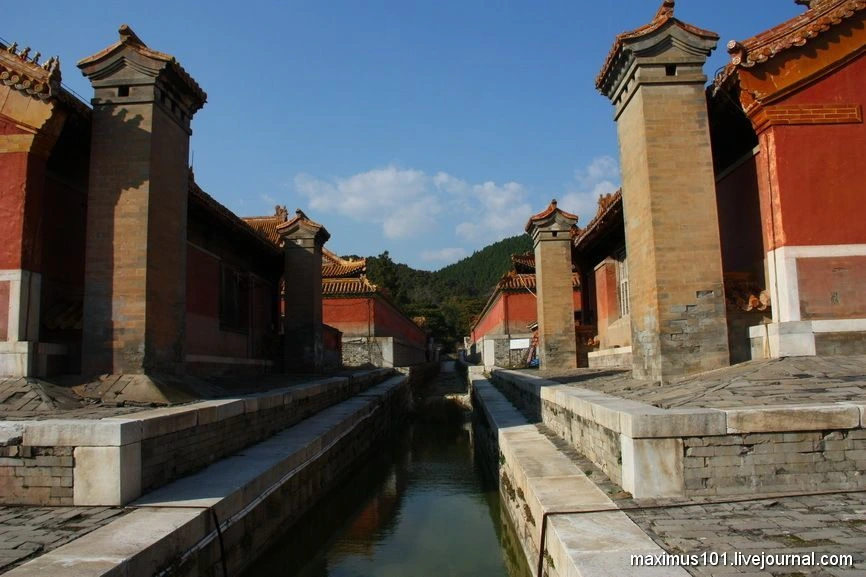
One of the funerary mausoleum Empress Dowager Ci'an pavilions.
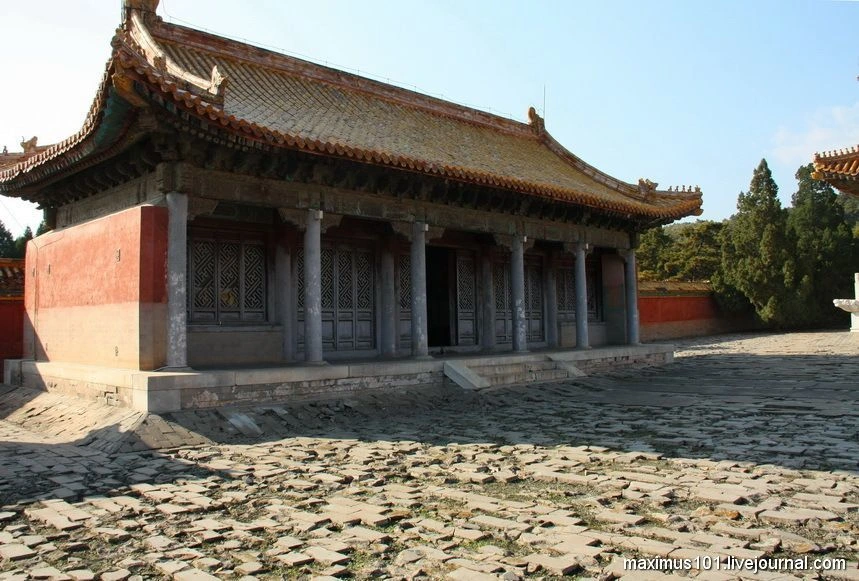
The main hall of the mausoleum of Empress Dowager Ci'an.
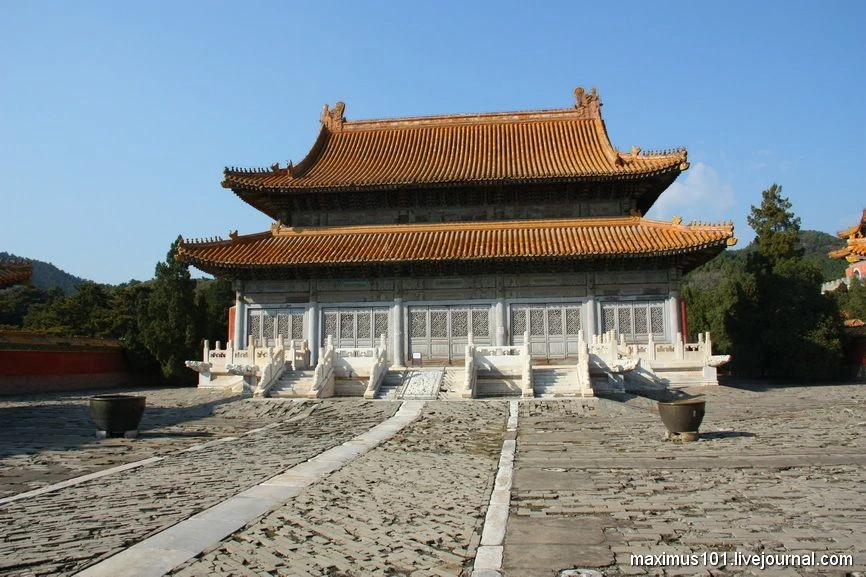
In contrast to the tomb of Cixi, Empress Dowager Ci'an mausoleum was not looted. Like most imperial mausoleums it is not available for inspection. You can only get in the front yard, back yard door, where the burial mound and tower firmly locked.
